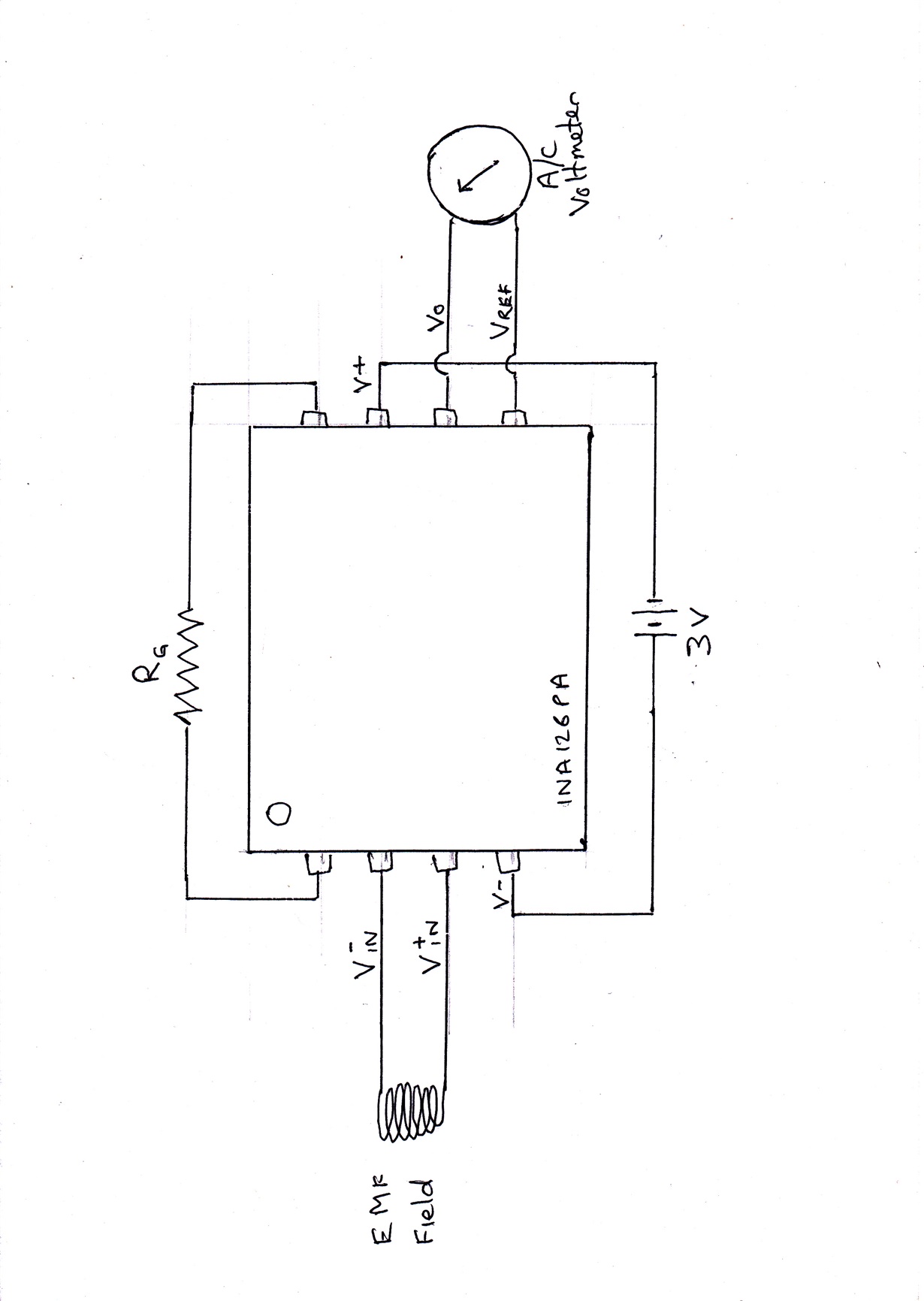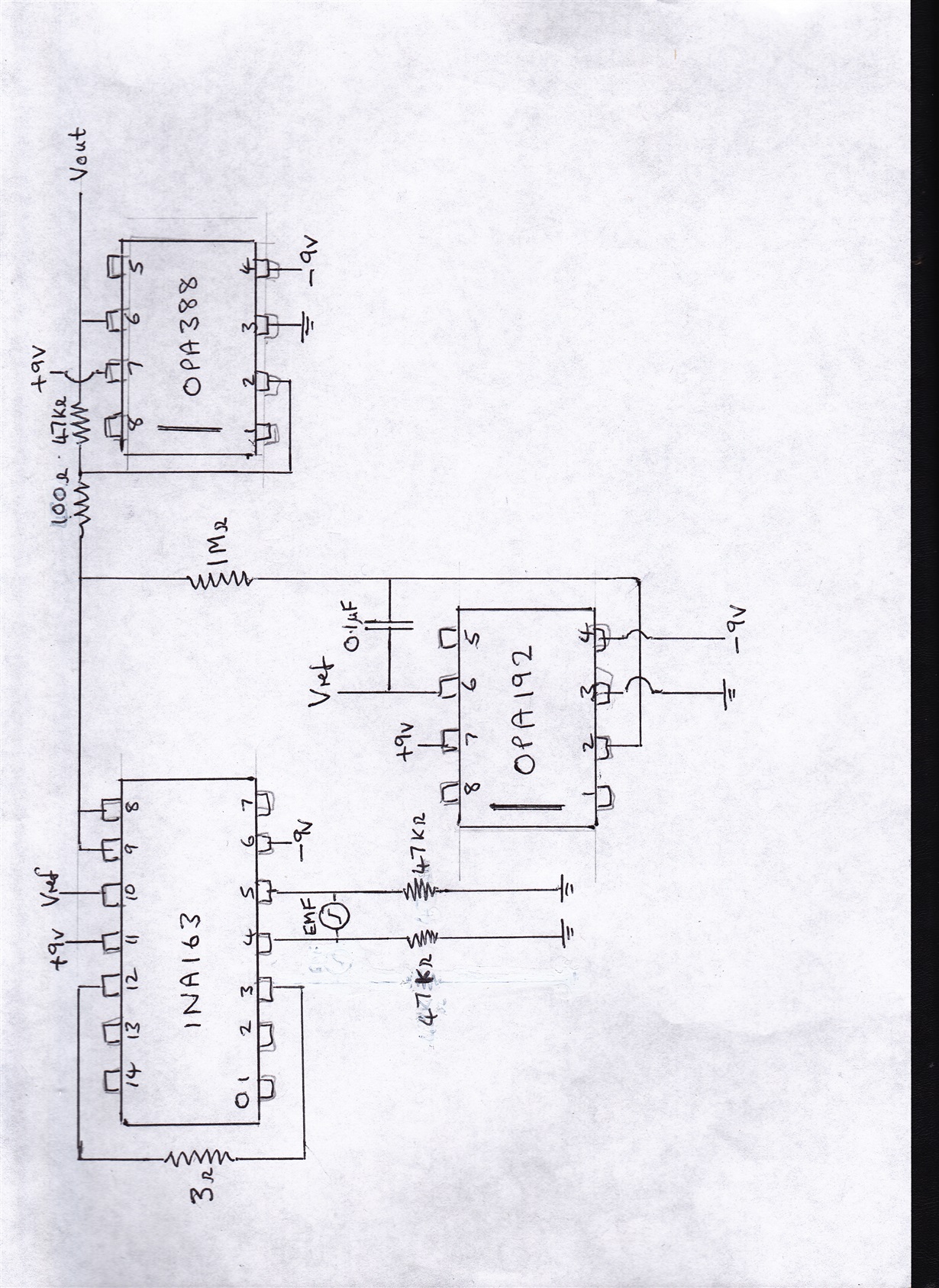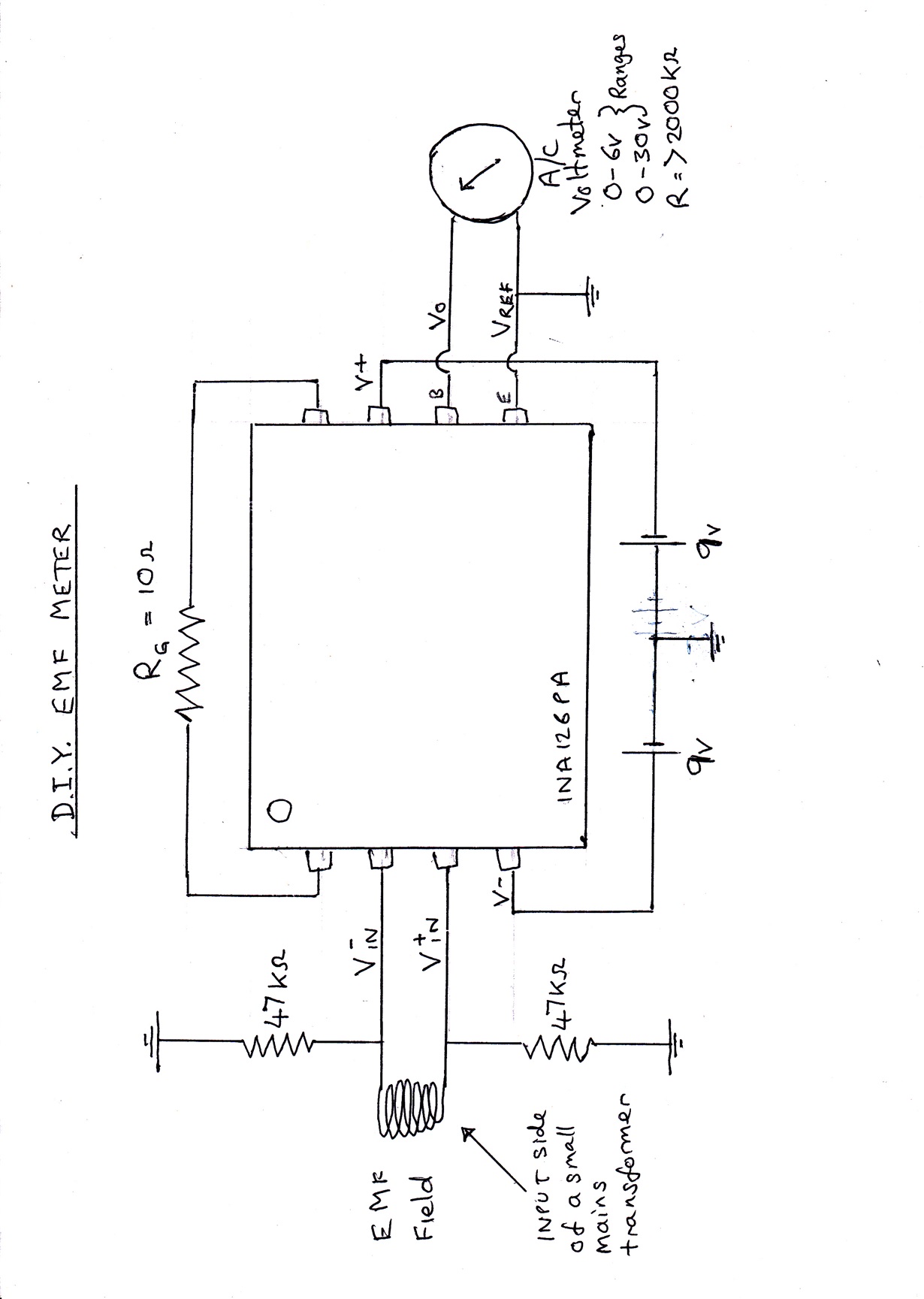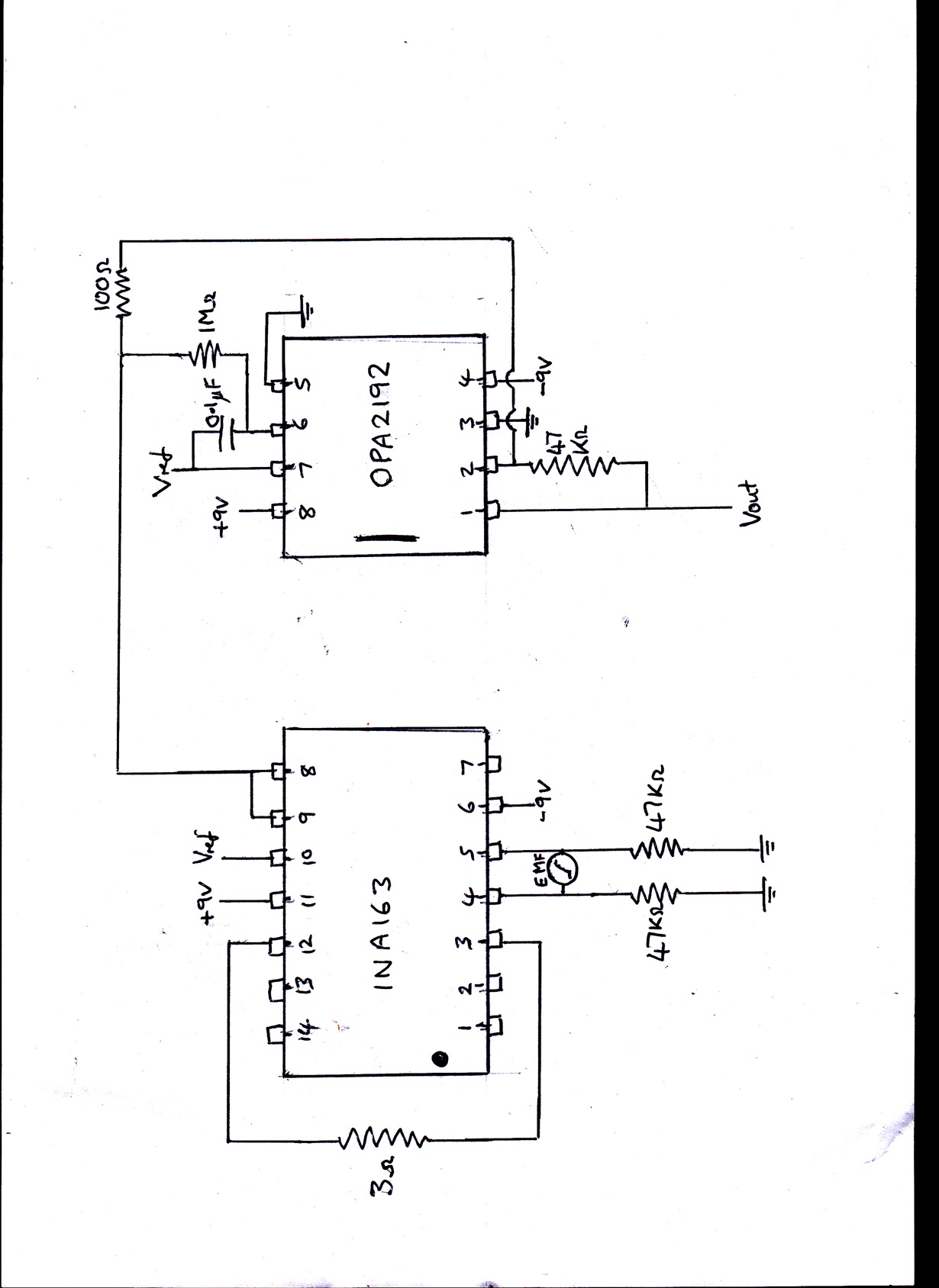Other Parts Discussed in Thread: TINA-TI, OPA388, INA163, OPA192, OPA2192
Hi, I'm trying to build an EMF detector which can detect very low levels of EMF.
I have a coil which outputs approx 0.2V AC when subjected to very high levels of EMF from a demagnetiser (50Hz?). But I want to amplify the coil's output so that I can easily detect very low levels of EMF with it.
I am using an instrumentation amplification IC (INA126PA) to amplify the 0.2V AC signal and an AC voltmeter to measure the output. I want this to be about 100V AC, but at the moment I am getting OV, with or without a 100 ohm external resistor (RG)
I have included a circuit diagram below. The circuit is currently on a breadboard. My 3V supply is from 2 x 1.5V batteries.
I'm sure I have done something really silly. Can anyone please tell me (simply) what it is?
Regards,
Alan.







